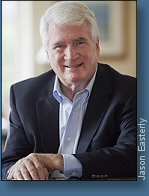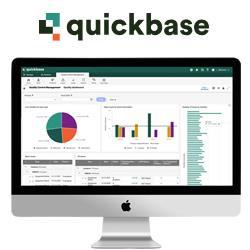The PV pioneers and solar veterans made the future possible, but we couldn't imagine what it would look like. The young now own it, and they have no doubts about where it is going, and what they have to do to get it there.
The Future of Solar is Written in its Past
Neville Williams | Author of Sun Power
Solar photovoltaic (PV) modules cost $50 per watt when I was introduced to the business of PV back in 1979 where I worked as a communications contractor for the U.S. DOE. This was a sexy technology, making electricity from sunlight; solar power kept our space satellites alive so we knew it worked and was reliable and had a long life. But PV had little practical application on Earth at the time.
Then the pioneering scientists and inventors of the modern solar cell became entrepreneurs and launched companies like Solarex, Arco Solar, and the Solar Power Corporation among others. Prices of PV dropped, even during the Reagan administration which gutted PV research. Commercial markets opened up as PV soon dropped to $10 per Watt. I came back to solar as a consultant for Solarex in 1988, and found the price of PV modules (called panels by everyone today) had fallen to $5 per Watt and sales to telecom, marine, and other specialized terrestrial markets were growing.
At $5 per Watt I wondered if PV could be used for homes. Yes, I learned, but not for American homes, not yet. But in the developing world PV was now an affordable means of supplying electric lighting to poor people in the developing world without electricity. So I launched the Solar Electric Light Fund (SELF), and later SELCO-India, which brought solar lighting to off-grid communities in twelve "Third World" (actually, the Two Thirds World) countries (SELCO has installed 150,000 solar home systems in India to date).
Along the way I was privileged to meet some of the true pioneers of solar: Peter Varadi, co-founder of Solarex; Charlie Gay, of Arco Solar, Siemens Solar, and NREL; Wolfgang Palz, the preeminent European physicist who managed the EU's renewable energy programs; Sanford Ovshinsky and Dave Carlson, developers of thin film manufacturing, Richard Swanson, single-crystal researcher, Allan Barnett, poly-crystalline innovator, and later, Karl Boer, who built the first solar house in America at the University of Delaware in 1973, using cadmium-sulfide solar cells. In India, I got to know the wonderful chairman of Tata-Bp Solar who built that company into one of the world's largest at the time. China, with its pitifully primitive photovoltaics factories -- where SELF electrified the first all-solar village twenty years ago -- was not yet on the PV radar screen.
As solar modules prices fell to $3.50 per Watt, I felt it was time to sell solar to Americans, and so I founded Standard Solar in Maryland in 2005. Venture capitalists didn't see the potential, told me solar was too expensive, and wondered why I didn't launch the company in California. I said there is an untapped demand in the five wealthy counties surrounding Washington DC – Montgomery, Howard, Fairfax, Loudoun and Arlington – which have the highest median household incomes in America. They could afford PV and business took off, proving the VC's wrong on all counts. (A few years later California's Solar City arrived in Maryland to compete with us.)
Prior to starting the company, I was inspired by the late Hermann Scheer, the world's greatest solar visionary, who had told me, "What we need now are practical practitioners." It was no longer about conferences, research, government support, political will, or incentives; the future of solar would be all about putting it to work, even at $3.50 a Watt.
No one anticipated the massive PV manufacturing scale-up in China which quickly brought solar down to $2.00 a Watt, a number prematurely predicted by my friend and one-time board member, Paul Maycock to be reached by 1990. Successful technologies always take longer to reach their full potential than anyone realizes, but they do get there eventually. The dream of "PV commercialization" was real at last.
That is where we are today as solar PV sells for between 60 and 70 cents per Watt, mostly thanks to China (for better or worse). You wouldn't have your MAC or your smart phone if it weren’t for China, and the world wouldn't have cheap solar. So it goes. Today it's all about economics, not environmental concerns or green politics.
So having been on this journey for nearly 30 years, which I recount in my recent book, SUN POWER (Tor/Forge, NY, 2014), I see the future as an extension of this remarkable and undiminished trajectory. Solar electricity doesn't need to get much cheaper to be -- as it is now in many markets -- the cheapest form of energy you can buy. Had you told me that 20 years ago, when I thought PV would not be good for much more than powering the unelectrified in the rural Third World, I wouldn't have believed it.
But for newcomers to renewable energy, PV is bright and new. Like the digital age, it has no history, even while this is year is the 60th anniversary of the invention of the solar cell. It is a "now" technology. I've read of people who've been in the business for only ten years described as "veterans." And the young, like "veteran" solar entrepreneur Jigar Shah, founder of Sun Edison, have a clear vision of a solar future which the original pioneers and us early veteran practitioners could scarcely have dreamed. It's all about "imagination," says Jigar. What we can imagine, we can accomplish.
The PV pioneers and solar veterans made the future possible, but we couldn't imagine what it would look like. The young now own it, and they have no doubts about where it is going, and what they have to do to get it there.
The next stage will be adopting the world's cleanest energy technology as the planet's main source of power. This means we're way beyond scientific research, demonstration projects, public subsidies, government grants, tax incentives, and divisive politics. Now it's about inexpensive clean power for everyone, from villagers in Bhutan, Bolivia and Zimbabwe, to American and European homeowners, to commercial electricity consumers worldwide. The utilities must play a role, and not fight it; they are going to make money selling solar power whether they know it or not. The financial markets, already in deep, will plow even more money into solar PV at all levels of the "value chain". More large corporations, along with thousands more small installation companies, will get into the game. And government regulators driven by pure economics and public concern will break up the fossil fuel monopolies, assuring a solarelectric future for all.

NEVILLE WILLIAMS is a solar power pioneer, advocate, and entrepreneur. He founded a highly successful non-profit organization to bring sun power to unelectrified peoples in developing countries and has launched companies all over the world to sell and install solar-electric systems. Williams first became involved with solar power during the Carter Administration as a consultant to the US Department of Energy. Williams lives in Naples, Florida.
Sun Power is available in hard cover from Barnes & Noble Bookstores, or Amazon, and as an E-book for Kindle or Nook. Published by Forge, a division of Macmillan, NY.Sun Power
The content & opinions in this article are the author’s and do not necessarily represent the views of AltEnergyMag
Comments (0)
This post does not have any comments. Be the first to leave a comment below.
Featured Product

